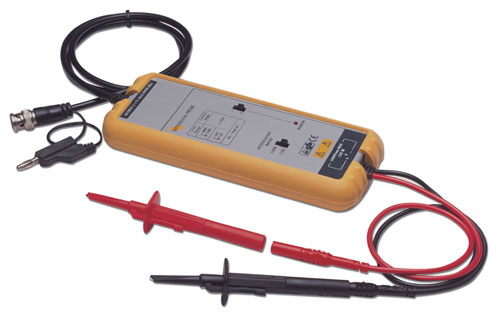Originally posted by BroMikey
View Post

Without diff probes you have to have common for both probes on the negative side of the resistor and make sure you have no ground connected from your scope to house power. I'm really not too fond of this because one takes a chance on getting zapped or smoking the equipment. If you're careful and really think through how you have everything connected, you can get away with it. Just make sure you don't have a ground path from your scope to your amp and that you connect the common on your probes to the exact same location.
And Dave, a good current probe would be nice, but they're pricey too, usually more so than a decent differential probe. I tend to think if we use a small ohm carbon resistor, we should be in good shape. I'm using a 0.12 Ohm that seems good so far, at least it has been for low frequency.








Comment